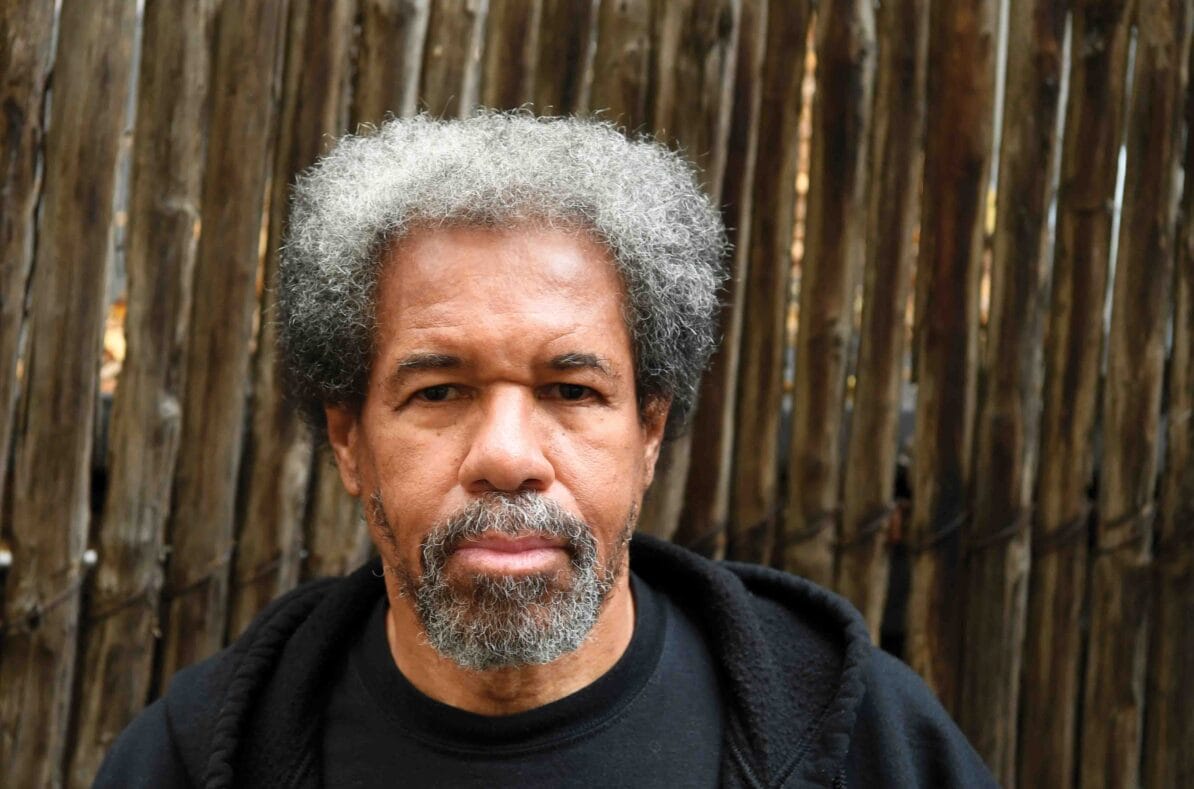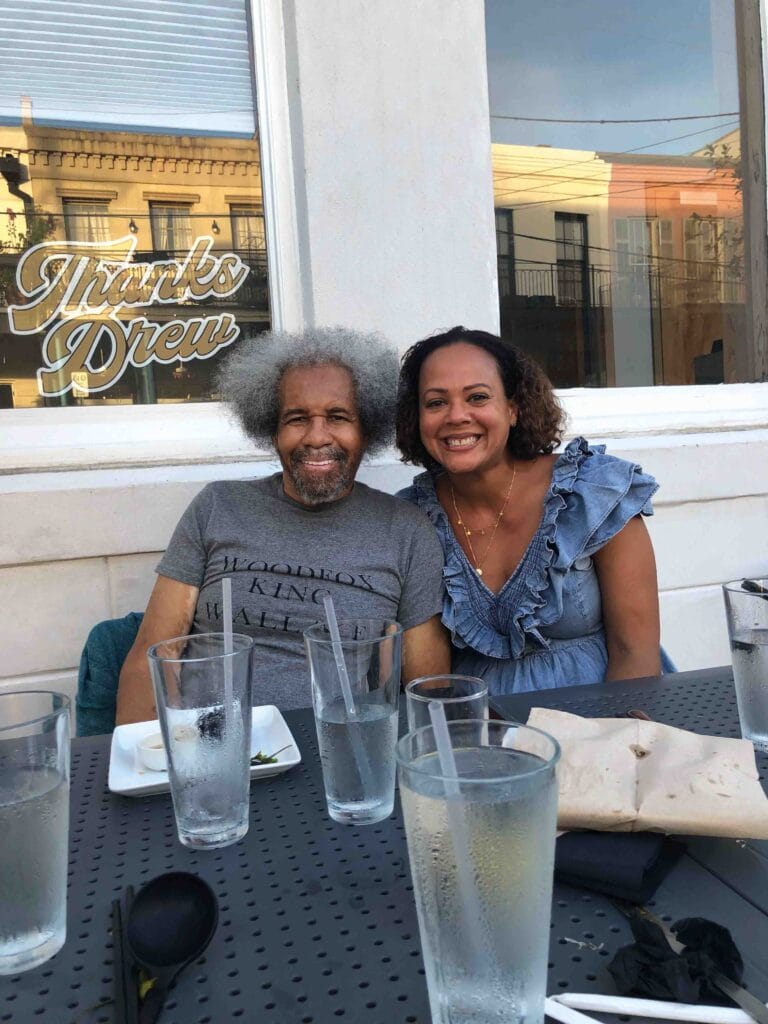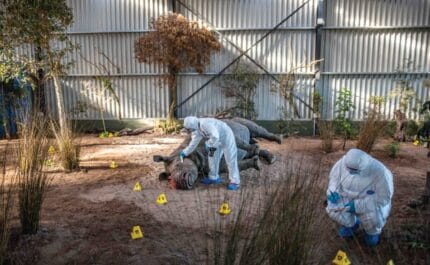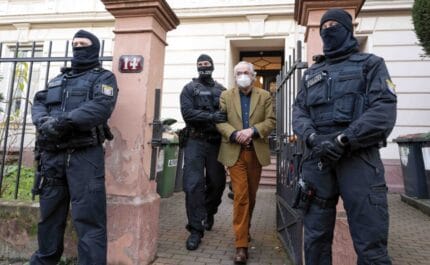Albert Woodfox 1947-2022
In August a wrongly convicted man who spent longer in solitary confinement than anyone else in US history died aged 75. His friend and former lawyer, Carine Williams, remembers the extraordinary life of Albert Woodfox, whose spirit could not be broken

Albert Woodfox, photographed in Paris, 15th November 2016, after his release from prison. Photo: Alain Jocard/AFP via Getty Images
4th August 2022 (Taken from: #48)
Albert Woodfox, who spent almost 44 years in solitary confinement for a crime he did not commit, died of complications from Covid-19 on 4th August. Until his release in 2016, Woodfox spent 23 hours a day locked up in a 6ft by 9ft concrete cell. No other prisoner in US history has spent longer in solitary confinement. In his 2019 memoir Solitary, Woodfox wrote that he awoke every morning with the same thoughts: “Will this be the day I lose my sanity and discipline? Will I start screaming and never stop? Every day I pushed insanity away.”
Carine Williams, a member of the legal team that ultimately succeeded in getting Woodfox released, remembers the first time she saw the reality of CCR – ‘closed-cell restricted’, the term used for solitary confinement at Louisiana State Penitentiary, where Woodfox was mostly held – with her own eyes. “Walking the CCR tiers is like walking through a county kennel for stray animals,” she says. “There’s no air conditioning and in the summer it’s sweltering. Row after row of adult men are caged like dogs in small concrete cells and in various states of distress. Some lie on the floor in a wet T-shirt because it keeps them a little cooler, some rock back and forth, some just howl.”
Through his many years of living under these appalling conditions – along with the beatings, teargassings and humiliating cavity searches which at times were routine in CCR – Woodfox had maintained his innocence. Along with Herman Wallace he’d been convicted of the 1972 murder of Brent Miller, a 23-year-old guard at Louisiana State, a prison commonly known as Angola, its name taken from the former slave plantation on the site. A third man, Robert King, who was convicted of a separate prison murder, made up the ‘Angola Three’. All three spent decades in solitary confinement, and all were members of the Black Panther party, a leftist black power organisation set up by Bobby Seale and Huey Newton in California in 1966.
Woodfox was raised in New Orleans at a time when racial segregation was still enforced. His father abandoned the family when he was a small child and his mother did everything she could, including turning to prostitution, to provide for her six children. As a teenager Woodfox committed some serious offences, including assault, which saw him join the general population at Angola for the first time in 1965, where he witnessed a culture of sexual abuse. He also saw armed white guards routinely physically assault and racially abuse black inmates, who were made to pick sugar cane and cotton on the prison farm seven days a week.
Woodfox, who spent the following years in and out of prison for various offences, first met Black Panther members while incarcerated in New York in 1970 – during his sentencing for armed robbery in New Orleans he’d managed to escape the court and flee to New York, where he was soon arrested again. Before joining the Black Panthers he was, by his own admission, “a pitiful, disgusting piece of shit”. The group’s discussions about institutional racism, white supremacy and capitalism transformed the way he saw the world. “It was as if a light went on in a room inside me I hadn’t known existed,” he wrote in Solitary. According to Williams the Black Panthers helped Woodfox “tap into his agency and his power to define himself, and not only be defined by his external circumstances.” For the first time in his life he had a sense of purpose.
After being sent back to Louisiana to serve his sentence for armed robbery in June 1971 he set up a chapter of the Black Panthers with Herman Wallace at Angola. By April 1972, when Miller was found stabbed to death in a cell, the FBI was spending millions of dollars a year on fighting the Black Panthers. Woodfox and Wallace always maintained that their activism was the reason for their murder conviction, as well as for their solitary confinement. Their former lawyer concurs. “There’s no doubt about that. It was a huge part of why they were targeted as suspects in the first place, why they were sentenced and why they were punished in that way for so long,” says Williams.

Albert Woodfox and Carine Williams. Photo: Sandra Levick
Williams first met Woodfox in 2005 when she was working in a team led by attorney George Kendall, who took on Woodfox and Wallace’s cases pro bono (King had been released in 2001 after his conviction was overturned). She recalls studying the pair’s original murder trial and being shocked by its flaws. There was no physical evidence linking them to the crime, only the words of one witness, a serial rapist who – the then-warden revealed in a 1998 retrial that Woodfox lost – had been offered a pardon in exchange for testifying against them. “A number of fundamental tenets of constitutional rights were violated [in the original murder trial],” says Williams. “There was no stopping the steamroller over Albert and Herman’s constitutional rights.”
“Albert was in what they called the ‘dungeons’ of the prison,” she recalls of their first meeting. “If they wanted to punish someone who was already doing 23 hours a day of solitary confinement they’d send them there, where there were even more restrictions. There were no meals, just a ‘nutritional loaf’, and no clothes permitted, just a paper gown.” She recalls how Woodfox only looked at Kendall, with whom he was familiar, even when she asked the questions. She came to understand that for those in long-term solitary confinement, meeting a new person can trigger sensory overload.
“Solitary confinement is used as a punishment for the specific purpose of breaking a prisoner,” Woodfox wrote in Solitary. Yet none of the Angola Three broke. Williams says they shared a strong sense of discipline that helped them structure their 23 hours of lockdown each day – they typically used their free hour to run classes for other inmates. They’d lift weights made from rolled-up newspapers, play chess by shouting their moves down the hallway, and use toilet paper rolled into tight rings as hobs to cook food. They taught themselves civil and criminal law so they could fight back through the courts, and won several legal victories to improve their conditions. Woodfox, who sought to “turn his cell into a university, a debate hall, a law school”, described his single proudest achievement as teaching another prisoner to read. “We did not allow prison to shape us,” he wrote. “We defined ourselves.”
It was a gorgeous, beautiful, blue-sky day when Albert walked out of prison”
Every 90 days, for decades, the prison review board extended the Angola Three’s stay in CCR. Officials tried to justify this by saying that the men posed a continued threat to public safety; despite his impeccable prison record Woodfox was described by Louisiana’s attorney general in 2008 as “the most dangerous man on the planet”. Key to the Angola Three’s survival was the friendship they shared. King campaigned fiercely on behalf of Woodfox and Wallace after his release. Williams met Woodfox and Wallace together on several occasions and describes the bond she witnessed as “the most divine brotherly love that you can imagine”. Woodfox called Wallace “the other half of my heart”.
In 2013 Wallace had terminal cancer and Williams, King and Woodfox were able to arrange a legal meeting at the prison hospital to say goodbye. “If I become elderly and my cognitive deterioration sets in, I suspect this day will be the memory that doesn’t leave me,” Williams tells me, holding back tears. “The night before the trip I was crying on the bathroom floor,” she recalls, noting that she was close to leaving the legal profession at the time because she was so disillusioned by the lack of progress in the cases. “I had to pick myself up and get on the plane.”
While driving to the prison hospital she learned a judge had ordered Wallace’s immediate release. When she reached his bedside she broke the news to him that he was free. “Girl, I know where I am,” he replied, looking around the prison hospital. “I’m not free.” Shortly afterwards he was taken to a New Orleans hospital. Williams followed the ambulance and met him at his new bed. “He looked at me, smiled and said ‘Now I’m free’,” she says. “Herman got three days with his family. He had someone by his bedside when he died.”
In the 2000s the campaign to free the men gained momentum – Amnesty International got onboard and in 2006 Brent Miller’s widow, Teenie Rogers, joined the campaign, insisting Woodfox and Wallace were innocent. Over the many years of legal wrangling, Woodfox’s conviction was overturned three times, but Louisiana officials managed to keep him behind bars. On his 69th birthday in 2016, he finally walked out from prison after pleading no contest to a charge of manslaughter in Miller’s death. “It was a gorgeous, beautiful, blue-sky day,” Williams says. “He walked out with his brother Michael, who he was very close to, and I was content just to sit back and watch it all.”
The first thing Woodfox did as a free man was visit his mother’s grave. Then he visited his sister’s grave, then Wallace’s. “I remember sitting with him for an interview the day after his release and he didn’t know what to do with his hands,” Williams says. “He kept picking up his wrists and looking at them, and I realised that he wasn’t used to not having the weight of shackles on him.”
Woodfox gradually adjusted. Williams recalls her first text message from him – “He’d discovered emojis and it was full of happy faces, stars and flowers.” He lived in New Orleans but travelled the world, sometimes with King by his side, talking to audiences about the evils of racism and the shortcomings of the US justice system. He got to know the daughter whose childhood he’d missed and he spent time with his grandchildren. “He did everything he could in those six years,” says Williams. He also became a staunch campaigner against solitary confinement. But ending the practice in the US, which is currently keeping nearly 50,000 prisoners in prolonged isolation despite the UN considering it a form of torture, is a “Sisyphean task” according to Williams.
To Woodfox’s dismay the Black Panthers ceased operations in 1982, but Woodfox remained committed to the group’s principles and became a keen supporter of the Black Lives Matter movement. In Solitary he wrote about how he watched the group’s early protests on CNN from his cell and sadly reflected on how 40 years after his own racist conviction “the humanity of a black person is still in dispute”.
In summer 2022 Woodfox caught Covid and never recovered. “He’d been sick for about a month,” says Williams. “I was able to travel to New Orleans and spent the week prior to his passing with his family, helping sit vigil by his bedside. I just felt so thankful and grateful that I was able to be there… He made the most of the time he had [outside prison] but it feels like such an injustice that he didn’t have more of it. The fact that it was Covid… I guess I’m still processing my grief. There’s a lot of anger there.”
Williams continues to be inspired by her friend, who held a deep love of humanity despite experiencing the worst of it and was able to retain hope despite the bleakest of circumstances. “There were times when he acknowledged the possibility that he might die in prison,” she says. “But in his bones he didn’t believe that was possible. He always took a longer view of his case, a longer view of how we could get to justice.”
Albert taught me that everything we do matters. We can never stop fighting”
She recalls one time when there was a deal on the table – plead guilty to everything and walk out of prison the next day. “I tried to persuade Albert to take it and we argued over it for a few weeks,” she recalls. “He felt very strongly that it would be a sham to plead guilty and he couldn’t do it.” She heatedly told him that the entire 40-year arc of his struggle was a sham, that the whole criminal justice system was a sham, that there was no point staying in prison just to make the obvious point that everything is a sham when he could offer so much more to his community on the outside.
“I remember very clearly, he quietened down and centred himself,” she says. “And he replied, ‘It matters because I have to look in the mirror every day. And it matters because the system doesn’t have to be a sham.’ He stayed behind bars longer than he had to not only for his own principles, but also so that we, as a society, after so many decades of getting it woefully wrong, would have a chance to do something right.”
What did Williams learn from her extraordinary friend? “Albert was buried under 23 hours a day of lockdown and yet he flourished and bloomed,” she replies. “He taught me that everything we do matters. We can never stop fighting and we always have to hold on to hope.”
Slow Journalism in your inbox, plus infographics, offers and more: sign up for the free DG newsletter. Sign me up
Thanks for signing up.








